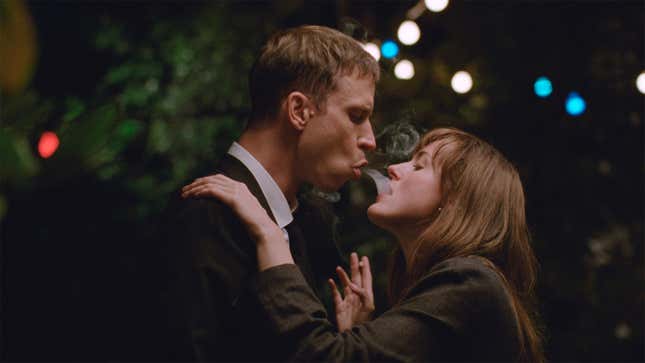The Worst Person in the World Sets a High Bar for the Modern Romcom
Norway's Joachim Trier talks to Jezebel about directing his festival fav, playing with the romantic comedy form, and buttholes.
EntertainmentMovies

Joachim Trier’s The Worst Person in the World has spent much of the past half year charming critics and festival audiences (most recently, it played Sundance). It’s an easy movie to watch—the tone is light overall, and it’s chopped up into 12 bite-size chapters with a prologue and epilogue—but its appeal is somewhat layered. The Norwegian-language film, in theaters now, is technically a romcom in that it focuses primarily on the love life of its protagonist Julie (Renate Reinsve) and is quite funny. However, there’s a sense of subversion when the movie approaches some of the genre’s conventions. Take for example Julie’s meetcute with Eivind (Herbert Nordrum). It occurs at a party that she crashes by herself, and their quickly philosophical conversation revolves around the boundaries of cheating (they’re both partnered and flying solo for the night). They devise a series of activities that push the cheating boundary without, in their estimation, breaching it: They smell each other’s body odor, shotgun a joint, pee in front of each other. In getting this close to romantic connection, they all but ensure their bond. Through his characters, Trier toys with the conventions of attraction.
In a Zoom interview with Jezebel this week, Trier compared his use of the romcom format to a “guardrail system” and “support wheels” for his writing on Worst Person, which he handled with his frequent collaborator Eskil Vogt. “We could lean a bit on the romcom, but we’re one country over from Bergman country. We live in Scandinavia, so it tends to get quite serious after a while, and dramatic,” he explained. “We were trying to combine those energies. But yeah, I’m interested in narrative form while knowing that I will never be successful in doing something pure. It’s not my style.”
He described the challenge of telling Julie’s story as: “How do you make a [movie] about the hardest thing to negotiate in life, which is intimacy and relationships and all that messy stuff?” One method employed was the aforementioned chapters he divided his movie into. “A strict system creates freedom sometimes,” Trier explained. This loosened up his narrative to be able to skip through Julie’s late 20s into her early 30s and juxtapose sad scenes with funny ones. One quotidian chapter finds Julie writing a rather bloggy essay (“Oral Sex in the Age of #MeToo”). A subsequent, fantastical one depicts time freezing in all of Oslo for everyone but Julie and Eivind—they spend the day together as if they are the only people on earth.
The prologue establishes the movie’s challenge of presenting a character who doesn’t know who she is. We see Julie in university, shifting her major from medicine to psychology and then deciding to pursue photography. She ends up with a job in a bookstore. Similarly, she jumps from partner to partner, finally landing on Aksel (frequent Trier collaborator Anders Danielsen Lie), the writer/illustrator of the cult comic book Bobcat. Julie’s move toward Eivind, a barista with no specific ambition, almost certainly constitutes an objective downgrade that the movie doesn’t judge her for.“I’m not pointing a finger with the title,” said Trier. “It’s a self-deprecating statement that she feels like, ‘Fuck, I’m the worst person in the world.’ They all probably do. We all do at times.”
-

-

-

-

-

-

-

-

-

-

-

-

-

-

-

-

-

-

-

-

-

-

-

-

-

-

-

-

-

-

-

-

-

-

-

-

-

-

-

-










































